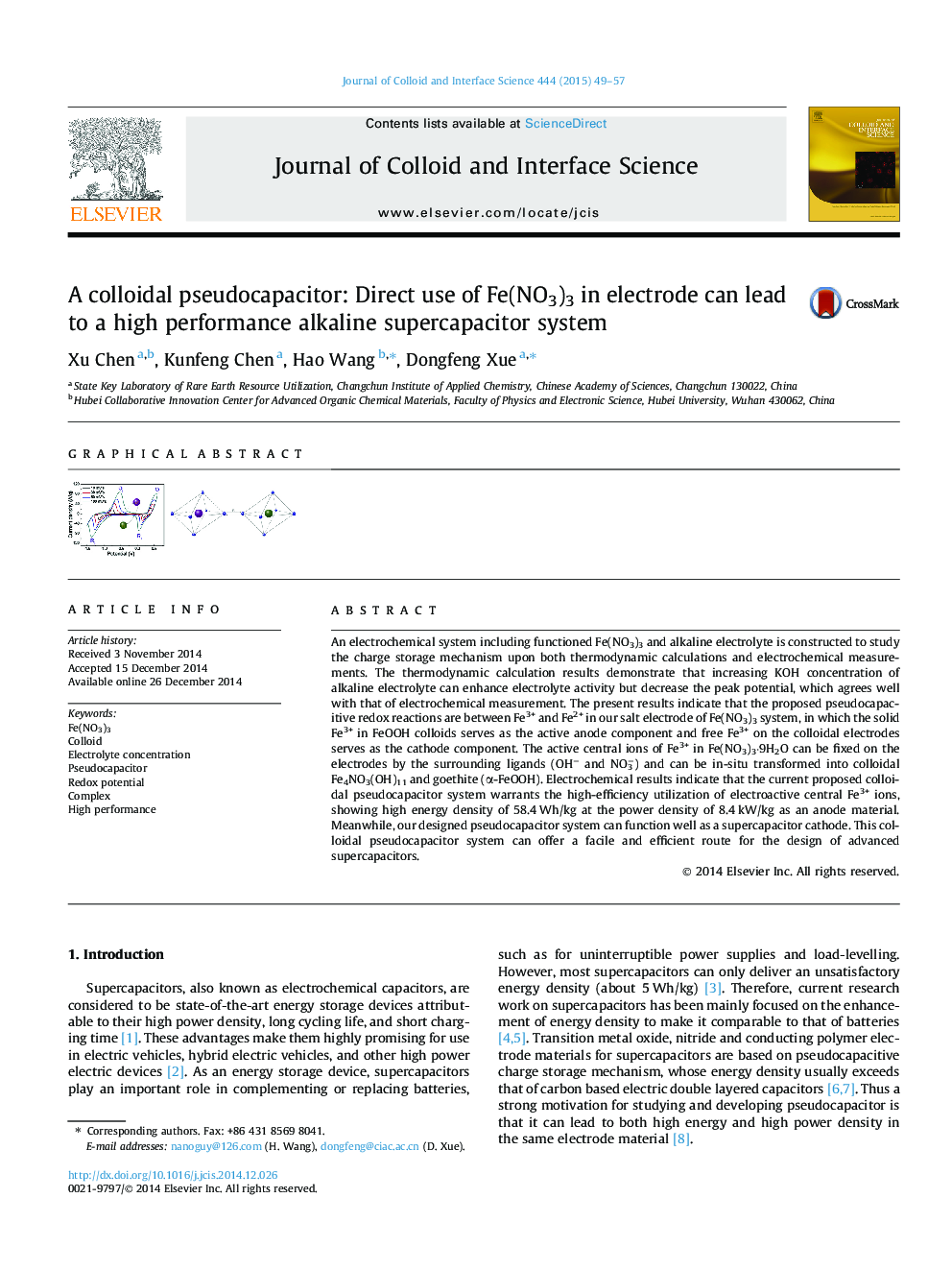| Article ID | Journal | Published Year | Pages | File Type |
|---|---|---|---|---|
| 606959 | Journal of Colloid and Interface Science | 2015 | 9 Pages |
An electrochemical system including functioned Fe(NO3)3 and alkaline electrolyte is constructed to study the charge storage mechanism upon both thermodynamic calculations and electrochemical measurements. The thermodynamic calculation results demonstrate that increasing KOH concentration of alkaline electrolyte can enhance electrolyte activity but decrease the peak potential, which agrees well with that of electrochemical measurement. The present results indicate that the proposed pseudocapacitive redox reactions are between Fe3+ and Fe2+ in our salt electrode of Fe(NO3)3 system, in which the solid Fe3+ in FeOOH colloids serves as the active anode component and free Fe3+ on the colloidal electrodes serves as the cathode component. The active central ions of Fe3+ in Fe(NO3)3⋅9H2O can be fixed on the electrodes by the surrounding ligands (OH− and NO3−) and can be in-situ transformed into colloidal Fe4NO3(OH)11 and goethite (α-FeOOH). Electrochemical results indicate that the current proposed colloidal pseudocapacitor system warrants the high-efficiency utilization of electroactive central Fe3+ ions, showing high energy density of 58.4 Wh/kg at the power density of 8.4 kW/kg as an anode material. Meanwhile, our designed pseudocapacitor system can function well as a supercapacitor cathode. This colloidal pseudocapacitor system can offer a facile and efficient route for the design of advanced supercapacitors.
Graphical abstractFigure optionsDownload full-size imageDownload high-quality image (73 K)Download as PowerPoint slide
